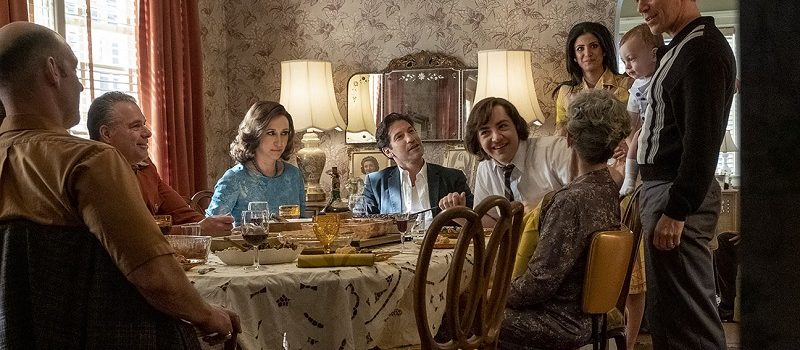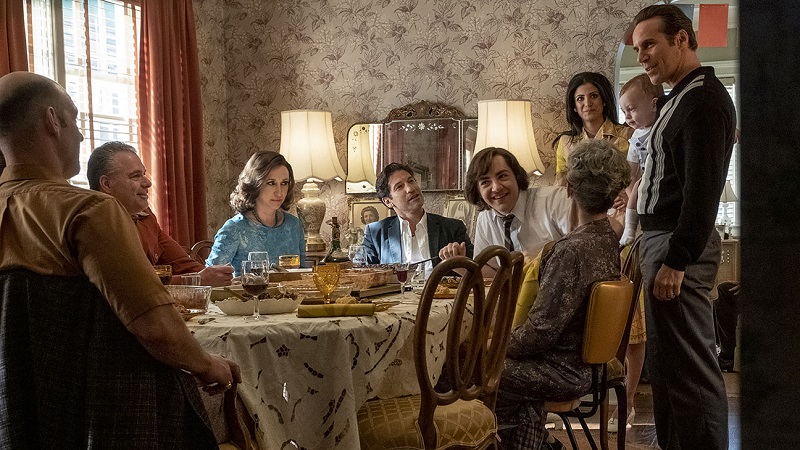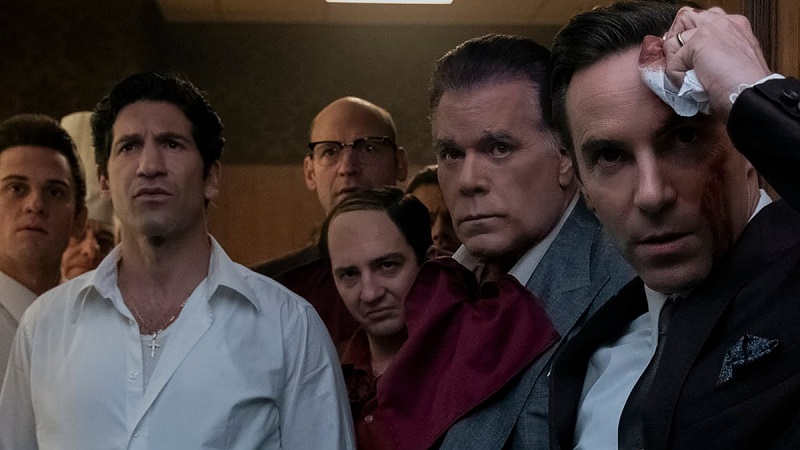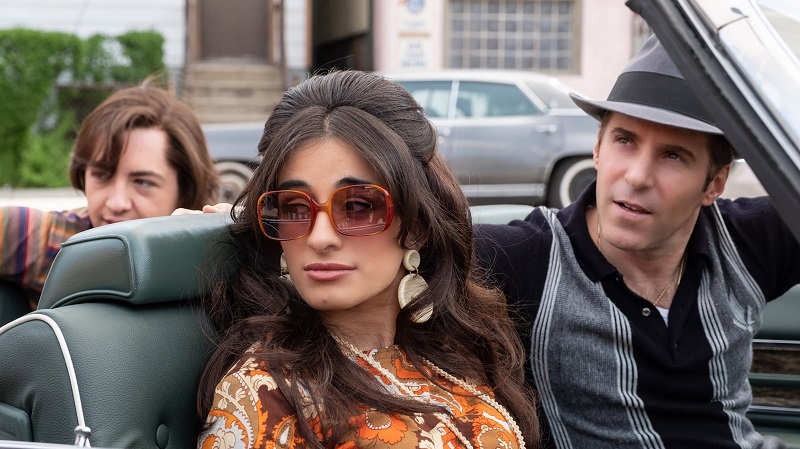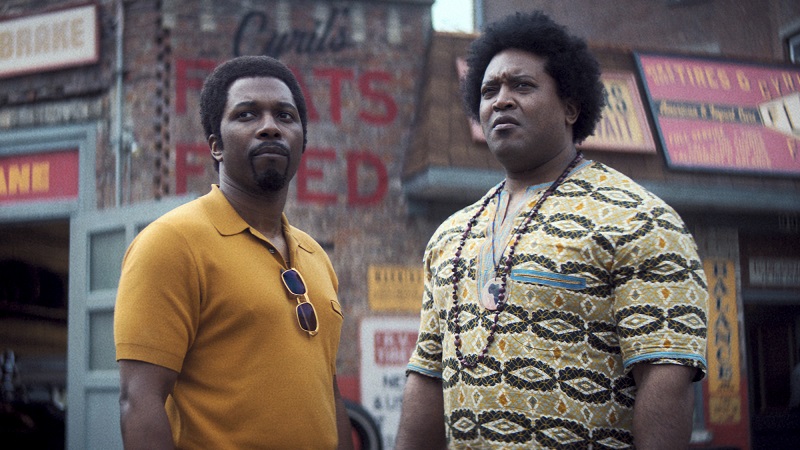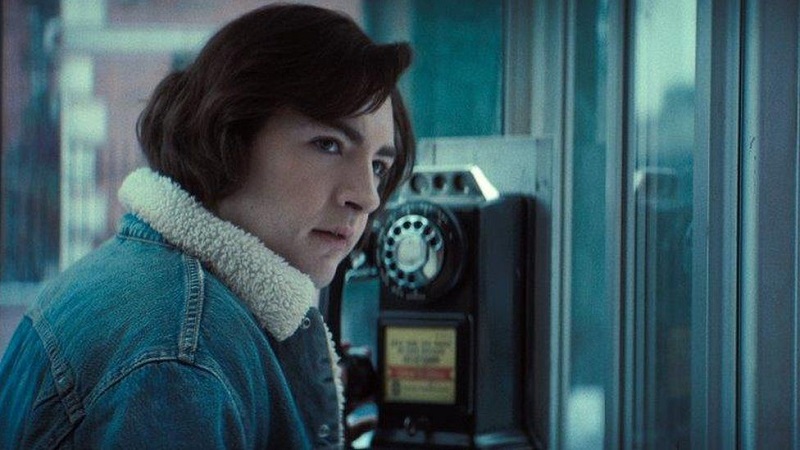David Chase certainly knows his New Jersey mob stories as the prequel to his pop culture transcending the Sopranos hits theaters and HBO Max, The Many Saints of Newark. We’ve seen New York-centric mob stories (Goodfellas et al) and after witnessing Chase’s HBO series and the first movie that takes place in that world, there is a distinct difference to the crime story of the Garden State and everywhere else.
The film is being marketed as how Tony Soprano was made, and that’s one way to look at it. But The Many Saints of Newark works extremely well as a stand-alone mob story—where one of the characters just happens to be one of television’s greatest creations—Anthony Soprano.
Chase penned the screenplay, and it is beyond rich. The Sopranos creator has a gift of putting audiences decisively in the world he created within seconds. That happened every week with his HBO hit show and it occurs once again with his film prequel. It was so nice to simply return to that landscape once again for a few hours. The way that Chase writes, we can almost smell the inside of some of these homes where Italian dishes are cooked and their delightful odors permeate. It’s rare that your senses beyond eyesight and hearing come into play when watching a slice of entertainment.
But Chase is that kind of storyteller. One can feel every ounce of authenticity in his world and that is one reason why The Sopranos went beyond a historically revered television show. That is absolutely the case with The Many Saints of Newark. People have missed our weekly Sunday night visit to New Jersey. Chase and his stellar cast, led by the late James Gandolfini as Tony Soprano, wholly and completely transported anyone who watched, dramatically sweeping them away from their living room. It was the people seismically inhabiting characters we adored or loathed, living in spaces that we felt like a fly on the wall, along with a score and musical selections that further enhanced what we were witnessing.
There are some familiar character names—Junior Soprano (Corey Stoll), Livia Soprano (Vera Farmiga), Silvio Dante (John Magro), Paulie Walnuts (Billy Magnussen), Pussy Bonpensiero (Samson Moeakiola), and of course Janice Soprano (Alexandra Intrator) and the big guy himself, a young Tony (William Ludwig) and a teenage “T” (Michael Gandolfini, the late actor’s son).
But let’s make something clear. This is not the origins story of Tony Soprano. Yes, it’s being advertised as such literally with its marketing tagline, ”Who Made Tony Soprano.” What makes The Many Saints of Newark special is that it firmly exists as a stand-alone mob movie and can be put on that shelf with Casino, The Godfather, A Bronx Tale, and of course, Goodfellas. Tony doesn’t even play a huge part in the movie—from a narrative perspective—until the second half.
At its heart, this is a tale about this clan, but its main protagonist is Dickie Moltisanti (Alessandro Nivola), Tony’s beloved uncle and Christopher Moltisanti’s (Michael Imperioli) father. In fact, Imperioli narrates the film from beyond the grave and much of what he says adds so much to this story but contributes to the legacy of The Sopranos as well.
When we first meet Tony, he’s only a boy, but this much is clear: He and Dickie have a bond that is thicker than blood. It’s innate to both of their DNA and their relationship—while a lot of deeper dramatic aspects play out—is the crux of Saints. Dickie is the title character. His father, ‘Hollywood Dick’ Moltisanti (Ray Liotta), is a higher up in the crime family.
As the film commences, Tony and Dickie are picking up the latter’s father from his trip to Italy and he’s returning with a new—much younger—wife, Giuseppina Moltisanti (the amazing Michela De Rossi). And we’re off…
The film is directed by Alan Taylor (Game of Thrones, Thor: The Dark World) with a command that is worthy of the stellar screenplay by Chase. He instinctively knows when to emphasize ebbs and flows in the drama. So much of a director’s job really takes place before a frame of film is shot. Casting and tapping the right people to fill those behind-the-scenes roles that can honestly make or break a film. With The Many Saints of Newark, Taylor’s casting director Douglas Aibel could not have done a better job. Need someone to portray Tony’s father Johnny Soprano? Why yes, Jon Bernthal would be perfect. He is and then some.
Then there’s music supervisor Steven Van Zandt, yes, the same guy who portrayed Silvio Dante on the show (and who works with some guy named Bruce Springsteen as his guitarist). Van Zandt outdid himself with the song selections that ran the gamut from Frank Sinatra to Mountain and The Steve Miller Band that added layers to the feel of the film in terms of cinematic tone and time period. Sometimes songs feel “inserted” into television series or films to do the leg work of placing an audience into a specific era. That helps, but the music supervisor shouldn’t be the only member of the creative team that contributes that most important element. With Taylor, Chase, of course, Van Zandt, production designer Bob Shaw, and cinematographer Kramer Morgenthau—along with countless other production contributors—have achieved what was accomplished with The Sopranos once again with the film prequel.
One of the biggest aspects of this time period, particularly in Newark, was the Civil Rights Movement. Chase would have been remiss not to include a spoke in his story’s wheel that referenced that enormous and justified, yet still painful, societal shift. Leslie Odom Jr. portrays Harold McBrayer, someone who works for Dickie collecting cash across town for the various numbers games that are out there, and any other demands. His conflict is palpable. Here he is working for a white family, doing their dirty work at times, and he just gets paid a snippet. As his fellow African-Americans are speaking up and taking to the streets, there is a pull of involvement that tugs at McBrayer’s soul. So much so, he’s inspired to think about taking his life in another direction away from Dickie and the Italians.
The Newark riots of 1969 are painted in such a way that there is a sense of fear and unrest that percolates as we wait for it to explode—because we know it will. As the looters loot and fires rage, there’s a wind of change that is coming to that city, the nation and yes, to the family business. Chase handled this entire aspect impeccably. It doesn’t feel forced as if he needed to address the racial element of the time, so he just added a character of color. The role is demanding and has a far-reaching arc to the story at hand and the one that arrived in television form. As such, they needed an actor with some serious mettle and Odom Jr. delivered on a multitude of levels.
Nivola is astounding and he needed to be for this entire endeavor to work. He is immensely charismatic, and one can see why the great Dickie Moltisanti was a character we felt we knew, simply from his references from the show. Talk about pressure for an actor. What Nivola achieved with his portrayal of Dickie is otherworldly. No one else could have done what was needed to be done with the encapsulation of Dickie. The actor has to utilize his entire toolbox throughout as the path that Chase laid out for him is complex, emotively challenging, and paternally pertinent for a certain future mob boss. Nivola does it with aplomb.
The family Soprano is impeccably captured by the thespians charged with bringing to life characters that we keenly know. Most notably are two, Farmiga as Tony’s long-suffering mother and Stoll as Tony’s Uncle Junior. Farmiga channeled what Nancy Marchand so memorably gave audiences on the show but had to take it a step further by capturing that… but in its rawest and younger form. Her performance, like Stoll’s, is not an imitation. These are fully-fledged and nuanced characterizations that had to be the highest of challenges for all involved, but particularly those tasked with playing Uncle Junior and Livia Soprano.
It seems weird to say, but Michael Gandolfini is a find. What he had to do was channel a performance by his late father that has gone beyond iconic. Again, no pressure. Plus, it’s a complex role that is firmly supporting in this rich ensemble. Yes, he looks exactly like his father. But what he does with his performance is all his own. He got the movements, the way he carried himself, even the cadence of Tony Soprano’s speech. Keep in mind, all those elements were developing—as we all do at that age. Michael had to provide a baseline for audiences that would connect his portrayal to his dad’s.
To say he achieved that is just the tip of this iceberg of awesomeness.
Grade: A

